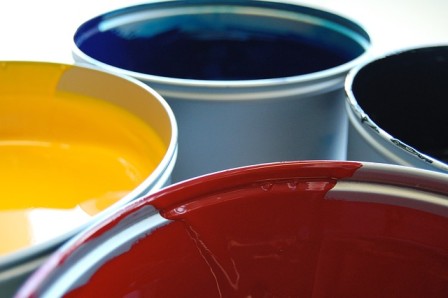Are you a beginner or an expert in painting who wants to ensure that quality control in the painting industry is maintained?
If you are then, Let me show you how.
The art of painting has always been a reflection of human expression and creativity, and the painting industry stands as a testament to this enduring pursuit.
Whether it is a commercial building or a fresh coat of paint on a homeowner’s living room, ensuring top-notch quality is non-negotiable.
Quality control in the painting industry is not just about ensuring the final product looks good and pleasing, it is about upholding standards, preserving integrity, and guaranteeing longevity.
Importance of Quality Control in Painting
Quality control in the painting industry is not merely about beautiful appearance.
It encompasses various factors that directly impact customer satisfaction, safety, durability, and overall project success.
Here is why it is crucial.
1. Customer Satisfaction
A well-executed paint job enhances the beautiful appearance of any space, leaving clients delighted.
Meeting or exceeding customer expectations fosters trust and encourages repeat business and referrals.
2. Durability and Longevity
High-quality paints and proper application techniques ensure the longevity of the paint job, protecting surfaces from wear, tear, and environmental factors.
This reduces the need for frequent repainting, saving time and money for both clients and painters.
3. Safety and Compliance
Ensuring safety standards in material selection, application methods, and environmental regulations is paramount.
Quality control practices ensure that projects are completed safely and in compliance with industry regulations.
4. Reputation and Brand Image
Consistently delivering superior quality builds a positive reputation for painting contractors and companies.
A stellar track record attracts new clients and strengthens brand loyalty.
Key Principles of Quality Control in Painting
To maintain high standards in the painting industry, adherence to these key principles is essential.
Here are the fundamental principles of quality control.
1. Preparation is Key
Thorough surface preparation, including cleaning, sanding, and priming, lays the foundation for a flawless paint job.
Skipping or rushing this step can lead to careless issues and premature paint failure.
2. Use High-Quality Materials
Opting for premium-quality satin paints, primers, and tools ensures better coverage, durability, and finish.
Cheap materials may save costs initially but often result in subpar outcomes and client dissatisfaction.
3. Attention to Detail
Adequate attention to detail during every stage of the painting process is critical.
From proper masking and taping to precise application techniques, every detail contributes to the overall quality of the finished product.
4. Regular Inspections and Testing
Conducting regular inspections and quality checks throughout the project helps identify and rectify any issues promptly.
Testing paint samples, monitoring drying times, and assessing color consistency ensure uniformity and notes to specifications.
5. Continuous Training and Improvement
Investing in ongoing training for painters and staying abreast of industry advancements fosters continuous improvement in quality control practices.
Embracing new technologies and techniques promotes efficiency and delivers superior results.
Best Practices for Quality Control
Implementing these best practices enhances the efficiency of quality control efforts in the painting industry.
Here are some recommended practices.
1. Develop Standard Operating Procedures (SOPs)
Developing SOPs for each phase of the painting process standardizes workflows, reduces errors, and ensures consistency across projects.
2. Conduct Pre- and Post-Job Checklists
Before commencing work, conduct a thorough checklist to verify that all necessary materials, equipment, and safety measures are in place.
Similarly, perform a comprehensive inspection post-job to address any deficiencies.
3. Invest in Quality Assurance Tools
Utilize advanced tools and technologies such as moisture meters, color-matching devices, and digital inspection software to streamline quality assurance processes and enhance accuracy.
4. Communicate Effectively with Clients
Clear and transparent communication with clients regarding project timelines, expectations, and any potential challenges fosters trust and minimizes misunderstandings.
5. Solicit Feedback and Learn from Mistakes
Encourage clients to provide feedback upon project completion and use constructive criticism as an opportunity for learning and improvement.
Addressing issues promptly demonstrates a commitment to quality and customer satisfaction.
Trends in Quality Control
As the painting industry evolves, several emerging trends are shaping the landscape of quality control.
1. Sustainable Practices
Growing environmental consciousness has led to increased demand for eco-friendly paints and sustainable painting practices.
Ensuring the use of low-VOC (volatile organic compound) paints and implementing eco-conscious disposal methods complements the evolving consumer preferences.
2. Digitalization and Automation
The adoption of digital tools and automation solutions streamlines project management, enhances communication, and facilitates real-time monitoring of quality control metrics.
From project scheduling software to IoT-enabled sensors, technology is revolutionizing quality assurance processes.
3. Remote Inspections
Virtual and remote inspection capabilities enable stakeholders to conduct inspections and quality checks without physically visiting the site.
It also offers convenience and flexibility, particularly in the context of remote work and social distancing measures.
4. Data Analytics for Predictive Maintenance
Leverage data analytics and predictive maintenance algorithms.
This enables proactive identification of potential paint failures and maintenance needs, minimizes downtime, and optimizes asset performance.
Conclusion
Quality control is not just a box to be checked. It is a commitment to excellence that defines the painting industry.
By prioritizing quality at every stage, you can uphold standards, preserve authenticity, and cement places like a master of his craft in an ever-evolving industry.
From preserving your integrity to ensuring customer satisfaction and building trust, quality control permeates every aspect of the painting process.
Whether you are a beginner or a professional, mastering the art of quality control is the key to transforming good projects into truly remarkable finishes.
Hope this was helpful to you.
